Our Classroom
A typical day at Sunnymont-Westside starts with a short circle time with your class to say hello to each child and talk about which activities are featured that day. We then move on to indoor and outdoor play.
Inside the classrooms, there are plenty of choices, including: playdough, manipulative toys, wood blocks, dramatic play, library, a writing center, science, fine motor, math and music.
Our outdoor activities include: water and sand play, riding toys and tricycles, climbing structures, balance and gross motor activities, outdoor art, gardening, woodworking, collaborative building, science and sensory activities.
Snack is considered part of our curriculum and children visit the kitchen station to prepare and “cook” their own snacks. In the 4 Day Transitional Kindergarten Class, children will sometimes bring their own snacks packed from home as preparation for Kindergarten lunch times.
We end our day with another circle time that features stories, rhymes, instruments and music and movement activities.
Click on the photos for more detail / slideshow format.
Tactile activities provide children with a chance to develop their sensory processing and increase their dexterity. This is also a great place for some children to ease into the classroom by looking around and observing what is going on.
The playdough is very tactile to punch, pull, poke, twist, and squeeze. It can be calming after a hurried morning getting to school. Playdough is also great for strengthening the muscles in the kids’ hands and arms, which is a step towards holding a pencil when they are ready to write!
As young children explore art, they learn about color, shape, form, technique while building coordination and creative expression and practicing fine motor skills. Our goal is to have children explore a variety of techniques and media for both two and three dimensional art at a weekly indoor art activity.
Art may also be offered outside, in the form of easel painting, collage art, painting tree stumps or our playhouse, chalk drawing, or other outdoor arts activities.
At the science center every spring, the teachers bring in silkworms to watch their life cycle, starting from hatching from an egg, to feeding them mulberry leaves as they continue to grow, and cocoon, and become moths! We also explore planting seeds and seedlings into our outdoor garden, and watching ladybugs and butterflies go through their life cycles too. It’s always an exciting time in the science area!
Rain doesn’t stop us! Not the kids anyway, while the working parents do try to find shelter. Kids come prepared in their raincoats and rainboots, but you’ll see some kids using their rainboots to collect precious rain water and that their raincoat is merely a suggestion! We have a collection of raincoats, boots and ponchos for kids and adults who came to school in dry clothes and would prefer to stay that way. Also, rainy days = earthworms!
The children help care for and feed our guinea-pigs, and make sure they're supplied with plenty of treats and cuddling. Caring for an animal helps children learn to nurture, be gentle, and take responsibility.
They’ll squeak loudly when they know there are snacks and no one offering it to them! They also do come out to visit with the children, with a working parent supervising and reminding the children to use gentle hands.
Here the children find paper and tools (pencils, crayons, chalk, scissors, hole punches, tape, and staplers) so they can create, explore, and practice drawing and writing as they become interested in these skills.
This is a wonderful play area that we change through out the year. It starts out as a kitchen, someplace all kids are familiar with. As the kids get more comfortable playing at school, the teachers transform it to a bookstore, veterinarian’s office, post office, and camping grounds! By playing out the adult roles they see around them, children build identity and self-esteem, as well as enhancing cognitive development.
The blocks and wooden vehicles stick around all year…and this room is what will transform into different dramatic play areas like the post office, veterinarian’s office, camping site, and a bookstore!
While manipulative activities happen all over the school, at least one table inside or outside is set aside for a manipulative activity each day. This table offers activities such as patterning blocks, pegs, puzzles, beads, and building sets, offering many different ways for kids to work on their fine motor skills and consider cognitive concepts such as patterning and matching and grouping different objects.
This is our outdoor kitchen and play house, where there is always a sand cupcakes baking away! There are hoses nearby in case the kitchen needs to be hosed down, or a sudden kitchen “fire”. And those hoses also have potable water, so in case you catch your child tasting the water, they’ll be just fine.
The sandbox is a great place for learning about sharing space and cooperation. As children explore the sand, they are building motor skills, coordination, scientific understanding, problem solving, and teamwork.
Children learn self confidence, balance, spatial awareness, motor planning and proximity as they explore our our climbing house. And when the teachers have carefully arranged red tissue paper “fires” throughout the playground, and set out the firefighters’ jackets, boots and hats, the kids spring into action to save our school!
Children learn self confidence, balance, spatial awareness, motor planning, problem solving and proximity as they explore different gross motor activities planned every week. This one is the children exploring the “pond” and finding a way to cross it!
There is a path where the children can ride on trikes, cozy coupes, tractors, three wheeled scooters, flying turtles, and more.
Our tire swing also offers many other learning opportunities. How many kids do we have swinging? How can we share the space? Who will help push? Can we still swing even on a rainy day? (Yes!)
Who knew pumpkins were the perfect preschool decoration/activity/younameit! The pumpkins suddenly appear in the beginning of November all around the school, in the classroom and outside. Pumpkin stems to use with the playdough, pumpkin modeling for the artist in all of these creative kids, and cutting them open to see what’s inside and watching and recording the decomposition process together during grouptime. In this photo, the pumpkins are used for hammering nails (fine motor skills) and remembering safety first, wear those goggles!
Yes, a toddler can handle hammers and nails! They may be little, but doesn’t mean that they’re not very capable and amazing! We weave life skills into our curriculum for lots of practice. It ranges from learning to cut with child safe knives to building with tools.
We encourage children to learn the joy of singing, and some of the foundations of understanding of pitch, tempo, and music as artistic expression. Musical instruments are always available to the children, usually outdoors so others who are sensitive to noises can be comfortable, too. Our group times and circle times offer a variety of musical activities, such as dancing, singing, acting out plays, clapping to the rhythm and playing instruments.
Children learn self confidence, balance, spatial awareness, motor planning and proximity as they explore our monkey bars, tire swing, and climbing house.
We have a children's garden areas where our kids can dig in the dirt, plant and pick flowers and learn about life cycles.
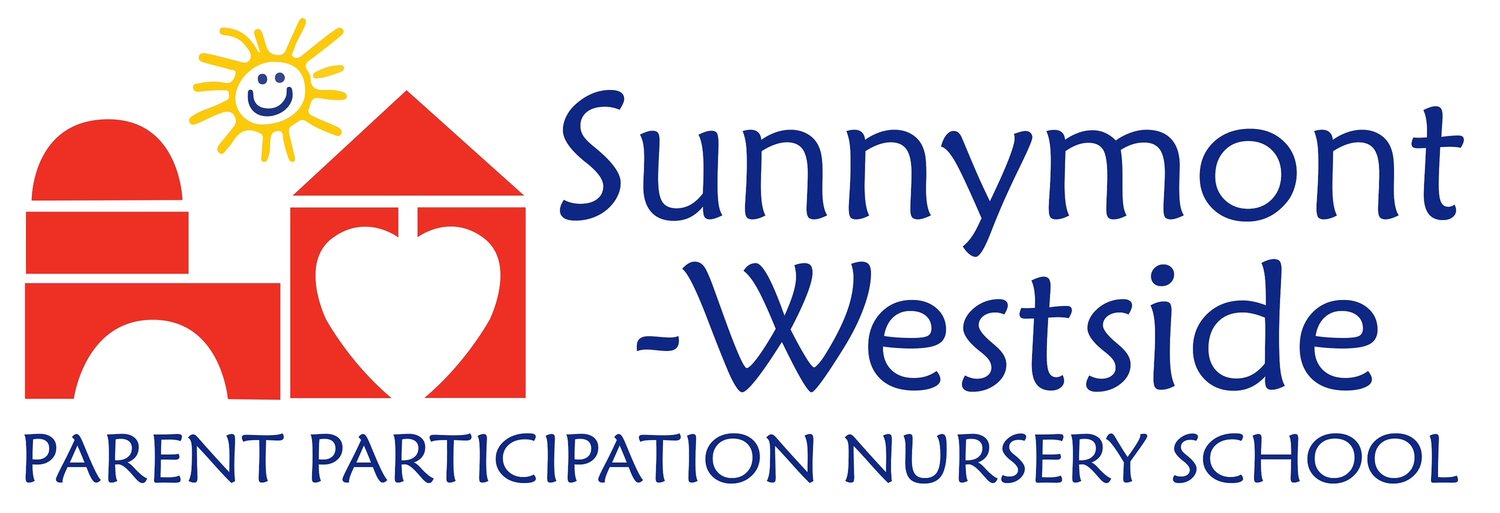
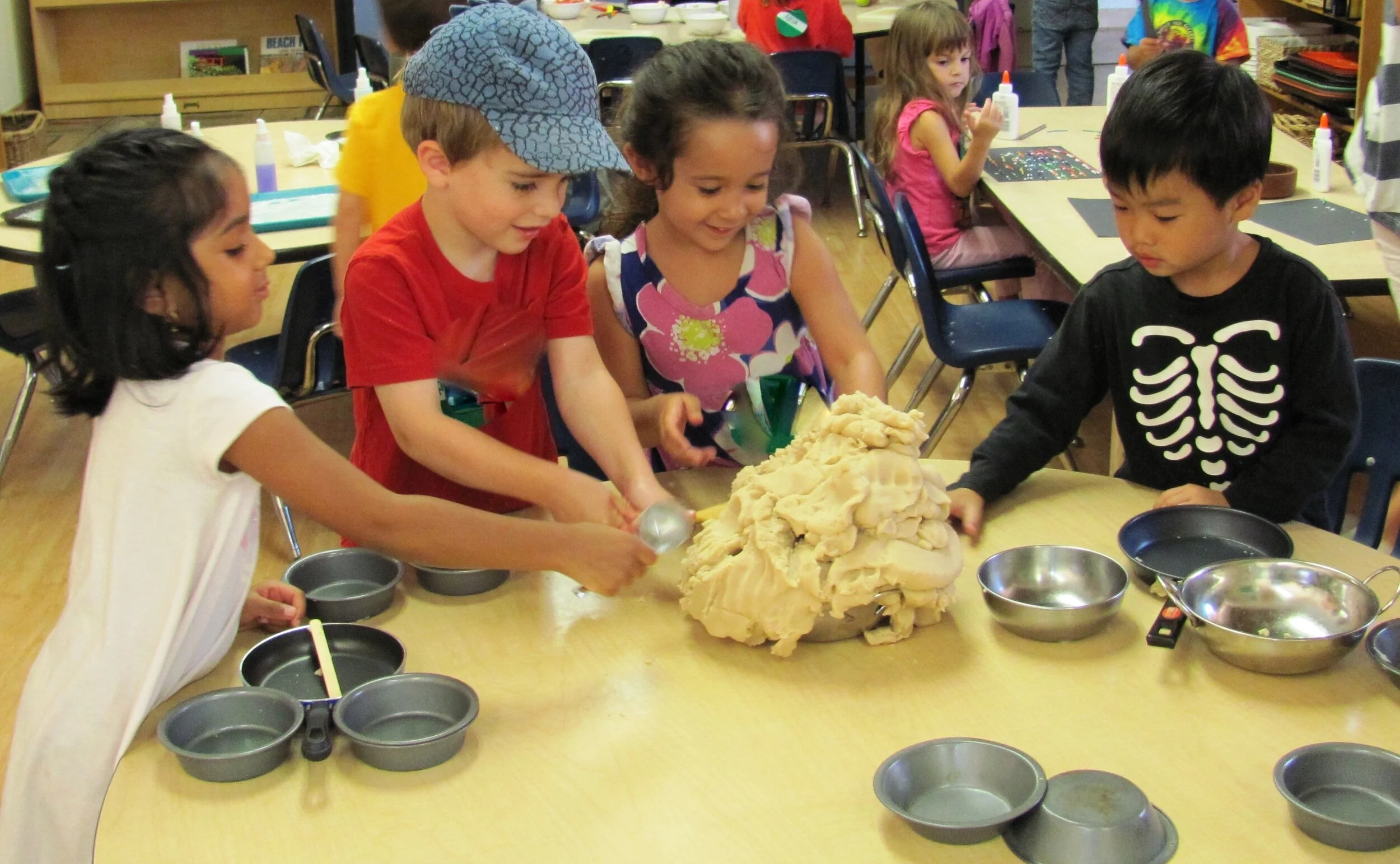

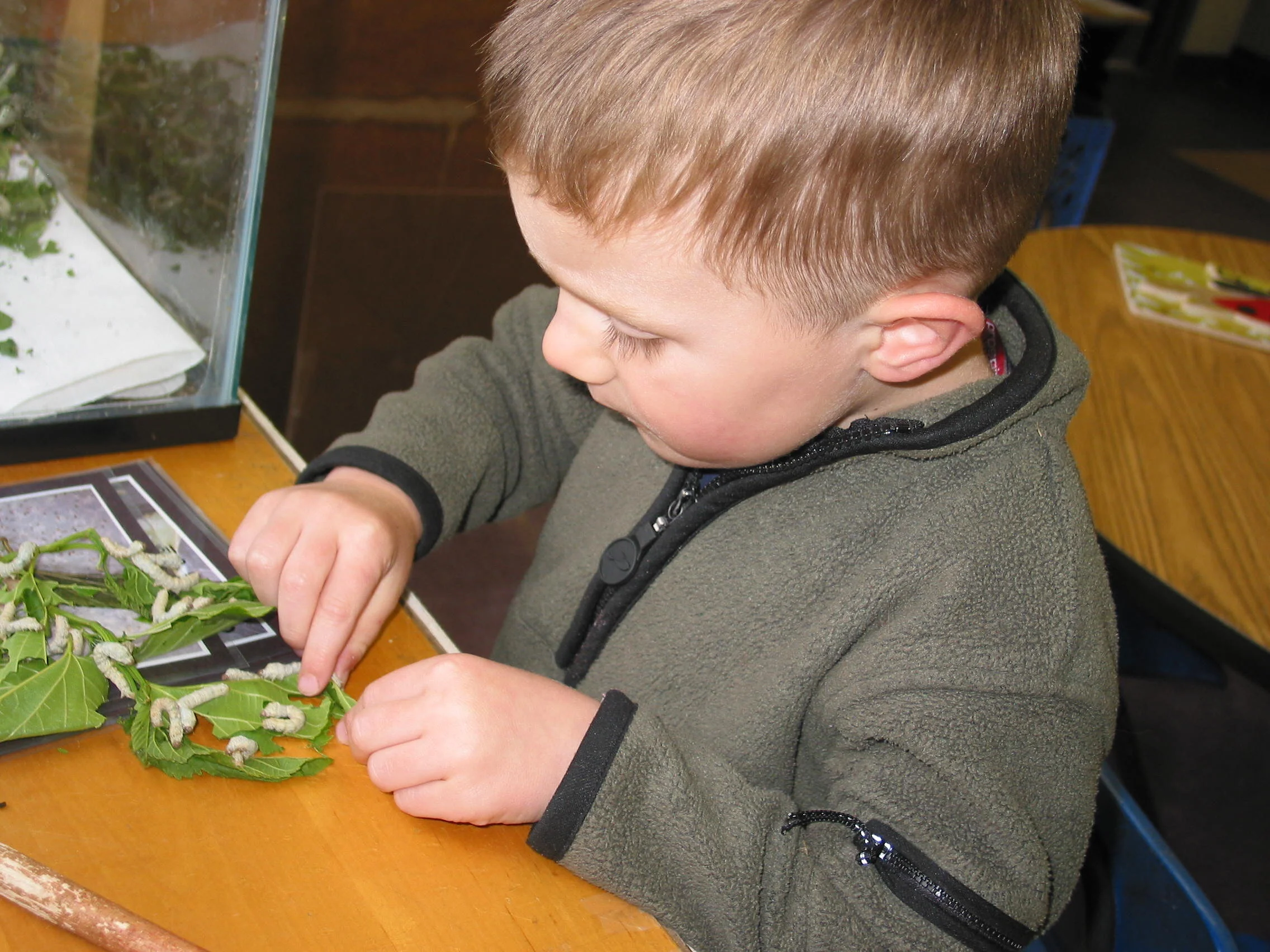










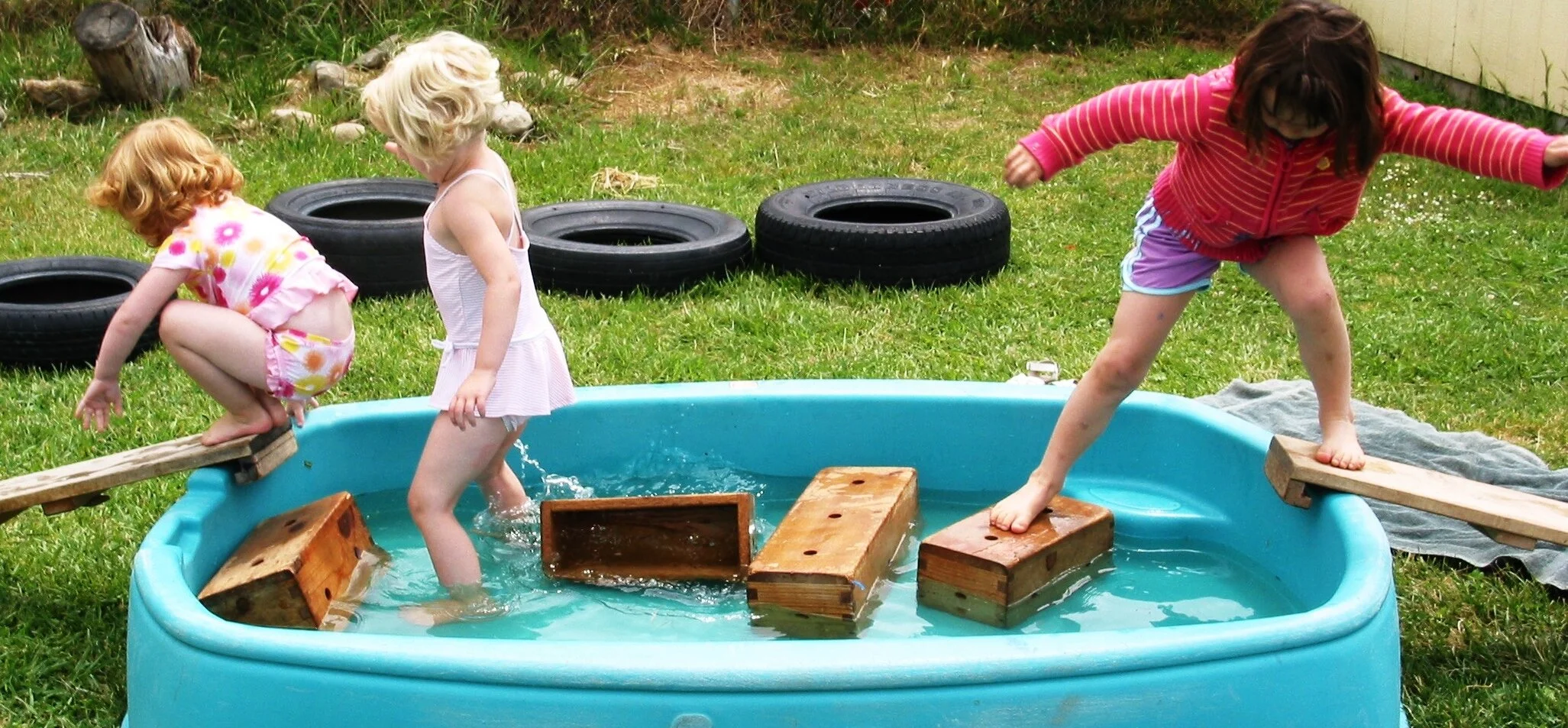


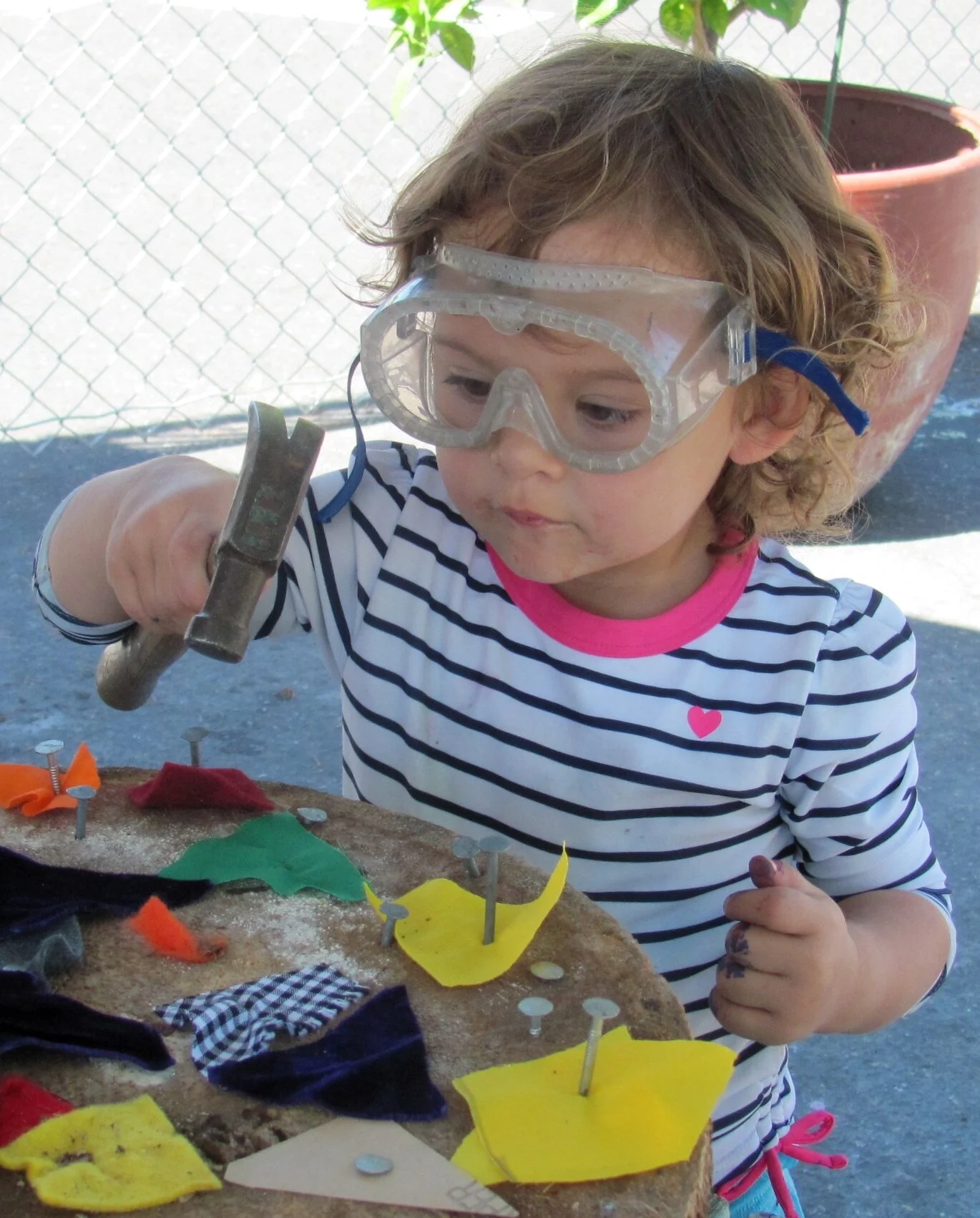



This is where the kids rush off to start their day at Sunnymont-Westside! Everyone washes their hands to clean off the germs and allergens, and we start the day together in the indoor classroom.